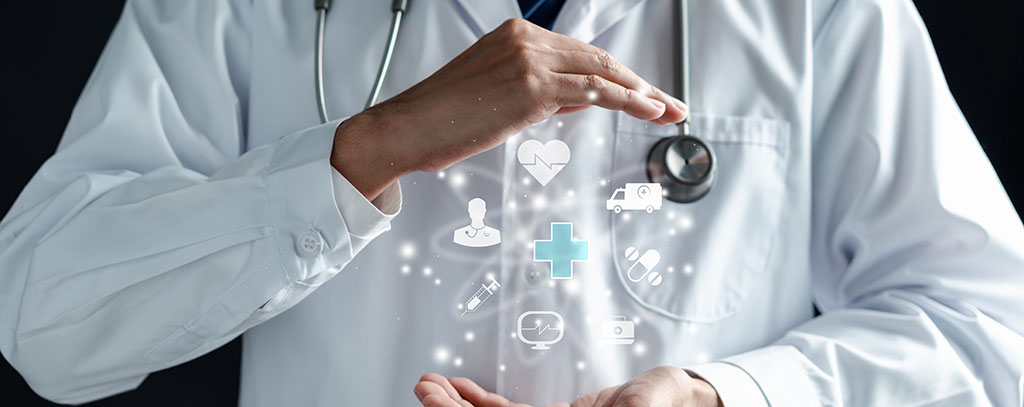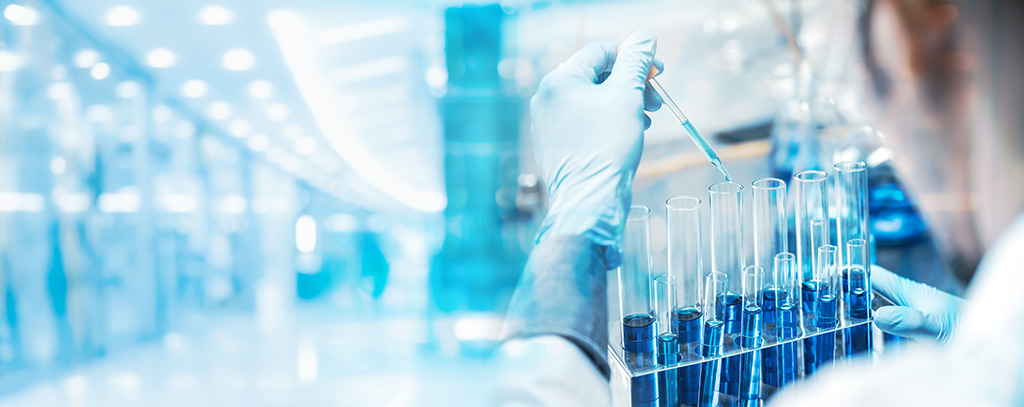


Elevating Workplace Safety: How Drug Testing Reduces Risks & Prevents Accidents
June 3, 2023


7 Key Reasons for Drug Testing in the Workplace Explained
June 4, 2023In today's fast-paced world, the importance of drug testing cannot be overstated, especially when it comes to industries with increased risk factors. This blog post will delve into various aspects of Drug Testing in High-Risk Industries: Ensuring Safety in Challenging Work Environments.
We'll begin by identifying which industries are considered high-risk and why implementing a comprehensive drug testing program is essential. Next, we'll explore the benefits of workplace drug testing for both employers and employees alike.
We'll then delve into the various drug testing options and strategies for ensuring compliance with relevant regulations while still providing a safe working environment. In conclusion, we'll examine how to abide by relevant regulations while still fostering a secure atmosphere for everyone in the workplace.
Join us on this informative journey as we navigate through the complex landscape of drug testing in high-risk industries – because when it comes to safety-sensitive positions, there's no room for error.
Identifying High-Risk Industries
Let's start by understanding the industries that require drug testing to ensure safety in challenging work environments.
In today's fast-paced world, workplace drug testing is essential for many high-risk industries where employees perform safety-sensitive jobs. But first, what exactly are these high-risk industries?
A. Transportation and Logistics
The transportation sector, including trucking, aviation and railroads, is subject to stringent rules on substance abuse as the potential risks of operating heavy equipment or vehicles while intoxicated are too high.
B. Construction and Manufacturing
Construction sites and manufacturing plants can be dangerous places if workers aren't alert at all times. Therefore, pre-employment drug testing is crucial in these sectors to maintain a safe working environment.
C. Healthcare Professionals
Hence, to guarantee that medical personnel are not under the influence while on duty, random drug testing is essential. Hence, random drug testing helps ensure that medical staff members are not impaired while on duty.
D. Oil & Gas Industry
This sector requires constant vigilance as it involves handling hazardous materials. Thus, implementing regular alcohol testing can prevent accidents caused by impaired judgment or reaction time.
Benefits of Drug Testing
Moving forward, let's explore some advantages of drug tests for both employers and employees within high-risk industries:
- Safety: By identifying individuals who may pose a risk due to substance abuse issues before they cause an accident or injury on the job site.
- Deterrence: An effective drug testing program can discourage employees from using drugs or alcohol while on the job.
- Compliance: Employers who implement drug testing programs demonstrate their commitment to adhering to federal and state regulations, which is crucial for safety-sensitive positions.
- Productivity: A safer workplace leads to increased productivity as there are fewer accidents, injuries, and absenteeism related to substance abuse issues.
In conclusion, identifying high-risk industries that require stringent drug testing measures is essential in ensuring a safe work environment. By understanding these sectors' unique challenges and implementing effective drug-testing policies, employers can protect both their workforce and business interests.
Benefits of Drug Testing in High-Risk Industries
Let's dive into the world of drug testing.
High-risk industries require stringent safety measures, and workplace drug testing plays a crucial role in ensuring employee well-being.
But why is it so important?
Glad you asked. Here are some compelling reasons:
- Safety First: Employees working in safety-sensitive positions must be alert and focused. Identifying those who may put themselves or others at risk due to substance abuse is facilitated through drug testing.
- Deterrence Effect: The mere presence of random drug testing can discourage employees from using drugs, thus promoting a safer work environment.
- Better Productivity: A sober workforce means increased efficiency and fewer accidents, leading to higher overall productivity for your company.
- Fewer Legal Issues: By complying with regulations like pre-employment drug testing, companies reduce their liability risks associated with workplace accidents caused by impaired employees.
- Caring Work Culture: An effective drug testing program demonstrates that employers care about their staff's health and well-being while maintaining high standards for workplace safety.
To sum up: implementing an efficient drug test-based approach can help create a safer work environment while boosting productivity levels.
Random Testing vs Scheduled Testing: Which One Works Best?
The debate continues...
In one corner, we have random drug testing, where employees are selected at random and tested without prior notice.
In the other corner, scheduled testing involves pre-determined dates for employee drug tests.
Which one should you choose?
- Random Testing: This method is highly effective in deterring substance abuse as employees never know when they might be tested. Random selection ensures no one is favored, giving all an equal opportunity of being chosen for testing.
- Scheduled Testing: While not as effective in preventing drug use, this approach can still help identify those struggling with addiction and provide them with support to overcome their issues. Scheduled testing may also be more cost-effective for smaller companies or those with limited resources.
The choice ultimately depends on your company's specific needs and goals - but remember: safety first.
Types of Drug Tests
Let's explore the realm of drug testing.
It's essential to select the correct kind of test for your organization's drug testing program in industries with high risk. Don't worry; we've got you covered with a breakdown of popular tests and their applications.
Urine Testing
The most common method is urine testing, which detects recent substance use within hours or days after consumption. This cost-effective option works well for pre-employment drug testing and random drug testing in safety-sensitive positions.
Saliva Testing
Saliva (oral fluid) tests are non-invasive and provide rapid results, making them ideal for post-accident or reasonable suspicion situations. Bonus: they're also harder to cheat than urine tests.
Hair Follicle Testing
Hair follicle tests can detect substance use up to 90 days prior, offering a more comprehensive view of an individual's history with drugs or alcohol. Note that this method may not be suitable for detecting very recent usage due to hair growth rates.
Blood Testing
Although more invasive and expensive, blood tests provide the most accurate results for both drug and alcohol testing. This method is often reserved for high-stakes situations or when legally required.
Breath Alcohol Testing
Breath alcohol tests, such as breathalyzers, are quick and non-invasive ways to determine an individual's blood alcohol concentration (BAC) on-the-spot. This test is commonly used in safety-sensitive positions where impairment due to alcohol consumption poses significant risks.
Remember: choose the appropriate test(s) based on your industry's needs, regulations, and desired detection window. Ensuring safety in challenging work environments is crucial, and workplace drug testing is a key component of that. Substance abuse can lead to dangerous situations, and it's important to identify those who test positive and take appropriate action based on test results.
Implementing a Drug Testing Program
So, you've decided to implement a drug testing program in your high-risk industry workplace. Congratulations. By implementing a drug testing program, you are taking an important step towards safeguarding the well-being of your employees and business. Now let's dive into how to create an effective drug testing program that covers all bases.
Step #1: Develop a clear written policy, outlining the purpose of the program, who will be tested, when tests will occur (pre-employment, random, post-accident), and consequences for positive test results. Familiarize yourself with federal laws, state regulations, and any industry-specific requirements related to drug testing in safety-sensitive positions.
Step #2: Select appropriate safety-sensitive positions. Determine which roles within your organization are considered high-risk or safety-sensitive jobs where substance abuse could have serious consequences on employee health and public safety.
Step #3: Select reliable drug testing supplies. Purchase accurate and easy-to-use kits from reputable suppliers like Halux Diagnostic to ensure consistent results across various types of tests such as urine, saliva, or breath alcohol testing.
Step #4: Educate your team about the importance of maintaining a drug-free work environment. Ensure everyone understands their role in upholding this standard by providing training sessions on workplace drug policies and procedures.
Step #5: Establish a relationship with a Substance Abuse Professional (SAP). A SAP can help evaluate employees who test positive, recommend appropriate treatment or counseling, and determine when it's safe for them to return to work.
Step #6: Monitor your program regularly and adjust as needed. Analyze the results of your drug testing efforts, identify trends or areas of concern, and make any necessary changes to ensure ongoing effectiveness in promoting safety within your high-risk industry workplace.
Incorporating these steps into your drug testing program will not only keep you compliant with regulations but also create a safer work environment for everyone involved. Workplace drug testing, pre-employment drug testing, random drug testing, safety-sensitive positions, alcohol testing, random testing, substance abuse, test positive, test results.
Ensuring Compliance with Regulations
Let's face it, nobody wants to deal with legal issues. That's why it's crucial for high-risk industries to ensure their drug testing programs comply with relevant regulations and guidelines. But don't worry, we've got your back.
Understanding the Applicable Laws
The first step is getting familiarized with the laws that apply to your industry and location. In the United States, for example, federal agencies like DOT have specific requirements for safety-sensitive positions in transportation-related fields.
Developing a Comprehensive Policy
A well-crafted policy serves as a solid foundation for compliance efforts. Your policy should cover all aspects of workplace drug testing, including pre-employment screening, random testing procedures, post-accident evaluations, and reasonable suspicion protocols.
Educating Employees and Management
An informed workforce is essential when implementing an effective drug-testing program that complies with regulations. Halux Diagnostic, a reliable drug testing provider, can be an excellent resource in this regard.
Maintaining Accurate Records
Accurate record keeping of test results, employee consent forms, training materials and other documents is essential for staying organized and to serve as proof of compliance in case any legal matters arise. This not only helps you stay organized but also serves as evidence of compliance should any legal issues arise.
Working with Reliable Testing Providers
Partnering with a reputable drug testing provider, like Halux Diagnostic, ensures that your tests are accurate and adhere to industry standards. Plus, they can help guide you through the complexities of regulatory compliance.
Staying Updated on Changes in Regulations
Monitoring revisions to drug testing regulations is a must for any business in order to ensure that their program abides by the law and shields both employers and employees from potential legal repercussions. Continuously monitoring any alterations to regulations related to drug testing in the workplace is critical for maintaining a compliant and current program, safeguarding both your firm and personnel from potential risks.
Conclusion
In conclusion, drug testing is crucial in high-risk industries to ensure safety and minimize risks. By recognizing the substances that can compromise an employee's capacity to work safely, businesses can put into practice a drug testing system which will aid in preserving a secure working environment for all personnel. Compliance with regulations is also essential to avoid legal issues.
At Halux Diagnostic, we understand the importance of maintaining a safe workplace and offer reliable drug testing supplies for high-risk industries. Contact us today at HaluxDiagnostic.com to learn more about our products and how they can benefit your company.





